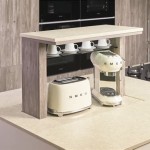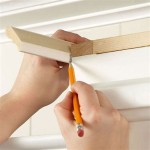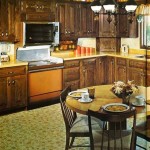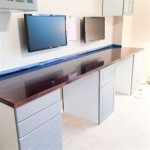Kitchen Cabinet Door Handles: A Comprehensive Guide
Kitchen cabinet door handles, seemingly small details, play a significant role in both the functionality and aesthetic appeal of a kitchen. They are the points of interaction for accessing storage, and their style contributes to the overall design language of the space. Selecting the appropriate handles requires careful consideration of various factors, including material, style, size, mounting type, and budget. This article provides a comprehensive overview of kitchen cabinet door handles, offering insights to aid in making informed decisions.
Understanding Handle Styles and Designs
The market offers a vast array of kitchen cabinet door handle styles, each catering to different design preferences. Categorizing these styles helps streamline the selection process. Common style categories include traditional, modern, transitional, and contemporary handles. Each category is characterized by distinct design elements.
Traditional Handles: These handles typically feature ornate detailing, curved lines, and classic finishes such as antique brass, oil-rubbed bronze, or polished nickel. Common designs include bail pulls, cup pulls, and decorative knobs. The emphasis is on creating a sense of timeless elegance and formality.
Modern Handles: Modern handles prioritize clean lines, geometric shapes, and a minimalist aesthetic. Stainless steel, chrome, and matte black are popular finishes. Bar pulls, straight handles, and minimalist knobs are frequently used to achieve a sleek and uncluttered look. Simplicity and functionality are key aspects of modern handle design.
Transitional Handles: Transitional handles bridge the gap between traditional and modern styles, blending elements from both. They often feature a combination of curved and straight lines, with finishes such as brushed nickel, satin nickel, or polished chrome. This style offers versatility and can complement a wide range of kitchen designs.
Contemporary Handles: Contemporary handles are characterized by innovative designs, unconventional shapes, and a focus on current trends. They may incorporate materials such as glass, acrylic, or mixed metals. Unique and eye-catching designs are common, reflecting a desire for individuality and cutting-edge aesthetics.
Beyond these broad categories, specific handle designs include bar pulls, knobs, cup pulls, finger pulls, and appliance pulls. Bar pulls are long, straight handles that offer a comfortable grip and are available in various lengths. Knobs are small, round handles that are typically used on smaller cabinet doors and drawers. Cup pulls are recessed handles shaped like a cup, often used in traditional or farmhouse-style kitchens. Finger pulls are designed to be discreet and are mounted on the edge of the door or drawer, allowing for easy opening without a protruding handle. Appliance pulls are larger and more robust handles designed for refrigerators, dishwashers, and other appliances.
Factors to Consider When Choosing Handles
Selecting the right kitchen cabinet door handles involves considering several factors to ensure both functional and aesthetic satisfaction. These factors include material, size, finish, mounting type, and budget.
Material: The material of the handle affects its durability, appearance, and cost. Common materials include stainless steel, brass, zinc, aluminum, and wood. Stainless steel is a popular choice due to its durability, corrosion resistance, and modern appearance. Brass is a classic material that offers a warm, traditional look and is available in various finishes. Zinc is a cost-effective option that can be plated with different finishes to mimic the appearance of more expensive materials. Aluminum is lightweight and corrosion-resistant, making it suitable for modern kitchens. Wood handles offer a natural and organic aesthetic, but require more maintenance and are less durable than metal options.
Size: The size of the handle should be proportionate to the size of the cabinet door or drawer. Larger doors and drawers typically require longer handles for better leverage and visual balance. A general guideline is to choose a handle that is approximately one-third the width of the drawer or door. However, personal preference plays a significant role in determining the appropriate size. It is advisable to experiment with different sizes to find the most comfortable and visually appealing option.
Finish: The finish of the handle should complement the other hardware and fixtures in the kitchen, such as faucets, light fixtures, and appliances. Common finishes include polished chrome, brushed nickel, satin nickel, oil-rubbed bronze, antique brass, and matte black. Polished chrome offers a bright and reflective surface that is easy to clean. Brushed nickel and satin nickel provide a softer, more muted sheen. Oil-rubbed bronze and antique brass offer a warm, traditional look. Matte black is a popular choice for modern kitchens, providing a sleek and contemporary aesthetic. The finish should also be durable and resistant to wear and tear.
Mounting Type: The mounting type refers to how the handle is attached to the cabinet door or drawer. Common mounting types include single-hole, two-hole, and back-to-back mounting. Single-hole mounting requires only one hole to be drilled into the cabinet, making it easy to install and replace. Two-hole mounting provides a more secure attachment and is typically used for longer handles. Back-to-back mounting involves attaching two handles on opposite sides of the door or drawer, providing a symmetrical look and a more substantial feel. The mounting type should be chosen based on the design of the handle and the thickness of the cabinet door or drawer.
Budget: Kitchen cabinet door handles range in price from inexpensive to high-end designer options. Setting a budget before starting the selection process helps narrow down the choices and prevents overspending. It is important to balance cost with quality and durability. While inexpensive handles may be tempting, they may not be as durable or long-lasting as more expensive options. Investing in quality handles can save money in the long run by reducing the need for frequent replacements.
Installation and Maintenance
Proper installation and regular maintenance are crucial for ensuring the longevity and optimal performance of kitchen cabinet door handles. Incorrect installation can damage the cabinet doors or drawers, while neglecting maintenance can lead to corrosion, tarnishing, and loosening of the handles.
Installation: Installing kitchen cabinet door handles is a relatively straightforward process that can be done by most homeowners with basic tools. The tools needed include a drill, screwdriver, measuring tape, pencil, and safety glasses. The first step is to measure and mark the location of the handle on the cabinet door or drawer. Use a template or measuring tape to ensure accurate placement. Next, drill pilot holes at the marked locations. The size of the drill bit should be slightly smaller than the diameter of the screws. Finally, attach the handle to the cabinet door or drawer using the screws provided. Be careful not to overtighten the screws, as this can damage the cabinet. For two-hole handles, ensure that the holes are aligned properly and that the handle is level.
Maintenance: Regular cleaning is essential for maintaining the appearance and functionality of kitchen cabinet door handles. The frequency of cleaning depends on the material and finish of the handle, as well as the amount of use it receives. For stainless steel handles, wipe them down regularly with a soft cloth and a mild detergent. Avoid using abrasive cleaners, as they can scratch the surface. For brass handles, use a brass cleaner to remove tarnish and restore their shine. For wood handles, dust them regularly and apply a wood polish to maintain their finish. Periodically check the screws to ensure that they are tight. If the handles become loose, tighten the screws or replace them with new ones. Avoid exposing the handles to harsh chemicals or extreme temperatures, as this can damage the finish.
Choosing the right kitchen cabinet door handles is an investment in both the functionality and aesthetics of the kitchen. A well-chosen handle can enhance the overall design of the space, while a poorly chosen handle can detract from it. By considering the factors outlined in this article, homeowners can make informed decisions and select handles that meet their needs and preferences.

Kitchen Handles Cabinet Pulls L Trex Outdoor Kitchens

Best Kitchen Cabinet Hardware 2024

Cabinet Hardware Placement Guide

The 16 Most Popular Knobs And Pulls For Kitchens

Cabinet Door Handles For The Modern Kitchen

Handles Diy Kitchens

Kitchen Cabinet Handle Placement Dos And Don Ts Living Letter Home

What To Look For When Kitchen Cabinet Hardware Toulmin Bath Custom Cabinets Kitchens And Bathroom Design Remodeling In Tuscaloosa Birmingham Alabama

How To Install Cabinet Door Handles True Position Tools

1 65 Inch Brass Cabinet Handle Knobs Kitchen Door
Related Posts








